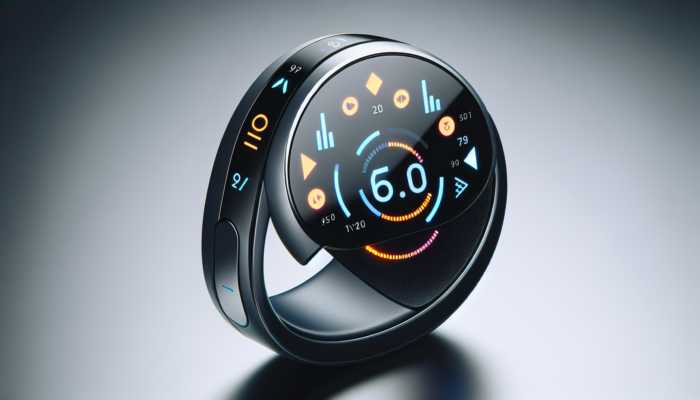In the current dynamic landscape of the business world, providing outstanding customer service has emerged as a paramount objective for organisations across various sectors. One effective strategy that businesses employ to achieve this is by utilising inbound call center services to enhance customer connectivity. This article delves into the multifaceted nature of inbound call center services and examines how they play a crucial role in fostering customer satisfaction and driving overall business success.
Understanding Inbound Call Center Services: Enhancing Customer Interaction
Inbound call center services encompass the systematic handling of incoming customer calls or inquiries on behalf of a business. These services are frequently outsourced to specialised call centre firms, which engage trained agents adept at managing customer interactions efficiently. The primary objective of inbound call center services is to offer rapid and effective support to customers, addressing their queries, concerns, or requests with utmost professionalism.
These inbound call center services can include a diverse array of activities, such as:
Customer Support: Agents receive training to provide solutions to customer inquiries and resolve any issues they may encounter. This can involve troubleshooting technical problems, delivering product information, or addressing billing inquiries.
Order Processing: Call center agents are responsible for managing order placements, modifications, or cancellations. They ensure that the customer’s order is processed accurately and provide updates regarding the status of their orders.
Appointment Scheduling: Inbound call centres assist businesses in scheduling appointments or bookings. Agents manage calendars, check availability, and arrange appointments according to customer preferences.
Complaint Resolution: Call centres are equipped to handle customer complaints and provide appropriate solutions. Agents are trained to actively listen, empathise with customer concerns, and take necessary actions to resolve issues efficiently.
Unlocking the Advantages of Inbound Call Center Services

Utilising inbound call center services offers businesses a plethora of benefits that significantly enhance their customer connectivity and overall success. Here are some of the pivotal advantages of adopting these services:
1. Elevate Customer Satisfaction Through Expert Support
Inbound call center services are instrumental in elevating customer satisfaction levels. When customers receive prompt and knowledgeable assistance from well-trained call center agents, it profoundly impacts their overall experience. By effectively addressing customer needs and delivering personalised support, businesses can cultivate strong relationships, resulting in enhanced customer loyalty and increased repeat business.
To guarantee high levels of customer satisfaction, call center agents must possess a comprehensive understanding of the business’s products or services. This expertise empowers them to provide accurate and pertinent information to customers, aiding them in making informed decisions. Moreover, agents should be well-versed in effective communication techniques, including active listening and clear articulation, to ensure that customers feel acknowledged and understood.
Beyond delivering exceptional support, call center agents can engage in proactive customer service initiatives. This involves following up with customers after their interactions to solicit feedback, address additional concerns, or offer further assistance. By taking these extra steps to ensure customer satisfaction, businesses can foster long-lasting relationships and cultivate brand advocates.
2. Providing 24/7 Availability for Global Customers
In the modern global marketplace, customers anticipate round-the-clock support. Inbound call center services empower businesses to offer 24/7 assistance, ensuring that customers can seek help at any hour. This continuous availability enhances customer connectivity significantly, enabling businesses to serve a diverse range of customers across various time zones and geographical locations.
To ensure 24/7 availability, businesses can utilise several call center solutions, including:
Virtual Call Centers: These centres allow businesses to employ remote agents situated in different time zones, guaranteeing coverage throughout the day. This distributed workforce ensures that customer inquiries are addressed promptly, regardless of the hour.
Interactive Voice Response (IVR) Systems: IVR systems enable customers to navigate through a menu of options, selecting the appropriate department or service they require. This automated system can provide basic information or connect the call to an available agent, even outside regular business hours.
By offering continuous support, businesses can effectively cater to the needs of their global customer base, delivering a seamless and satisfying experience.
3. Achieving Scalability and Flexibility for Business Growth

Inbound call center services grant businesses the flexibility to scale their operations according to fluctuating call volumes. During peak periods or seasonal surges, businesses can effortlessly increase their call center capacity to accommodate higher customer inquiries. Conversely, during quieter times, they can scale back operations, optimising resources and reducing costs. This inherent scalability and flexibility ensure that businesses maintain high-quality customer support while remaining cost-effective.
To achieve optimal scalability, businesses can implement the following strategies:
Outsourcing: Outsourcing call center services to a specialised provider enables businesses to tap into a broader pool of trained agents. This allows for swift adjustments to operations based on demand without necessitating significant infrastructure investments.
Cloud-based Solutions: These solutions offer the flexibility to add or remove agents as needed, providing on-demand scalability that allows businesses to adjust their workforce in real-time.
By adopting scalable and flexible call center solutions, businesses can ensure they possess the capacity to address customer inquiries efficiently, regardless of the volume.
4. Enhancing Customer Engagement Through Multichannel Support
In today’s digital landscape, customers favour interacting with businesses through various channels, such as phone calls, emails, live chat, or social media. Inbound call center services encompass multichannel support, enabling businesses to address customer inquiries across a range of communication platforms. This approach ensures that businesses meet customers where they are and provides seamless connectivity, thereby enhancing the overall customer experience.
To deliver effective multichannel support, businesses can adopt the following strategies:
Unified Communication Platforms: Implementing these platforms allows call center agents to manage customer interactions across multiple channels from a single interface. This streamlining process ensures that agents have access to all relevant customer information, irrespective of the channel used.
Social Media Monitoring: Actively monitoring social media platforms enables businesses to engage with customers proactively, addressing their concerns or inquiries in real-time. This responsiveness significantly enhances customer connectivity.
Self-Service Options: Providing self-service options, such as knowledge bases or FAQs, empowers customers to independently find answers to their questions. This reduces the necessity for direct interactions with call center agents while delivering instant solutions.
By embracing multichannel support, businesses can cater to the preferences of their diverse customer base, delivering a seamless and personalised experience.
5. Harnessing Data Collection and Analysis for Informed Decision-Making
Inbound call center services yield a wealth of valuable customer data. By analysing customer interactions, businesses can gain insights into customer preferences, pain points, and emerging trends. This data-driven methodology empowers businesses to make informed decisions, refine their products or services, and enhance the overall customer experience. Utilising call center analytics tools can help identify patterns, measure key performance indicators (KPIs), and pinpoint areas for improvement.
To leverage data effectively, businesses should consider the following:
Call Recording and Transcription: Recording calls and transcribing them allows businesses to review customer interactions in detail. This process helps identify areas where agents can enhance their performance, comprehend customer pain points, and uncover opportunities for service enhancement.
Speech Analytics: Utilising speech analytics tools aids businesses in extracting meaningful insights from customer conversations. These tools can identify keywords, sentiment, and trends, providing valuable information for informed decision-making and process optimisation.
Customer Feedback Surveys: Conducting feedback surveys following call center interactions provides direct insights into customer satisfaction levels. This feedback highlights areas needing improvement and guides businesses in their endeavours to enhance customer connectivity.
By harnessing the power of data, businesses can continuously refine their call center operations, deliver personalised experiences, and cultivate customer loyalty.
Implementing Best Practices for Inbound Call Center Services

To ensure the successful implementation of inbound call center services and optimise customer connectivity, businesses should adhere to the following best practices:
1. Invest in Comprehensive Agent Training for Exceptional Service
Skilled call center agents form the backbone of effective inbound call center services. Businesses should commit to comprehensive training programmes to equip agents with the necessary knowledge and skills to handle customer inquiries proficiently. This training should encompass product or service knowledge, communication skills, problem-solving abilities, and customer service techniques. Regular refresher training sessions can keep agents updated on new offerings, industry trends, and evolving customer expectations.
To enhance agent training, businesses can incorporate the following methods:
Role-Playing Exercises: Engaging agents in role-playing exercises allows them to practice handling different customer scenarios in a controlled setting. This approach helps develop their communication skills, problem-solving capabilities, and empathy.
Knowledge Management Systems: Implementing these systems provides agents with quick access to relevant information. This enables agents to swiftly find answers to customer inquiries, ensuring accurate and timely responses.
By investing in agent training, businesses can ensure that their call center team is well-equipped to provide exceptional customer service and create positive customer experiences.
2. Streamlining Call Routing and Queuing for Efficient Support
Efficient call routing and queuing systems are crucial for delivering prompt and accurate customer support. Implementing intelligent call routing algorithms guarantees that customers are directed to the most suitable agent based on their needs, minimising call handling time and enhancing customer satisfaction. Furthermore, integrating virtual queuing systems can eliminate wait times, allowing customers to receive a callback rather than remain on hold, thereby further improving customer connectivity.
To optimise call routing and queuing, businesses can consider the following strategies:
Skills-Based Routing: Routing calls based on the skills and expertise of agents ensures that customers are connected to the most qualified individual to address their inquiries. This minimises call transfers and enhances first-call resolution rates.
Automatic Call Distribution (ACD) Systems: ACD systems allocate incoming calls evenly among available agents, ensuring a balanced workload. This strategy prevents agent burnout and enables the efficient handling of customer inquiries.
Estimated Wait Time Notifications: Keeping customers informed about their estimated wait time can manage expectations and reduce frustration. This proactive approach demonstrates transparency and improves the overall customer experience.
By streamlining call routing and queuing processes, businesses can reduce customer wait times, increase agent productivity, and deliver prompt and efficient customer support.
3. Implementing Real-time Monitoring and Reporting for Quality Assurance
Monitoring call center operations in real-time is essential for maintaining service quality and identifying areas for improvement. Businesses should implement call monitoring tools to track key metrics such as call volume, average handling time, customer wait times, and agent performance. These insights enable businesses to identify bottlenecks, optimise workflows, and make data-driven decisions to enhance customer connectivity and overall call center effectiveness.
To effectively monitor and report on call center metrics, businesses can employ the following strategies:
Real-time Dashboards: Implementing real-time dashboards offers a visual representation of call center performance metrics. This allows supervisors and managers to monitor key indicators and take immediate action if necessary.
Quality Assurance Evaluations: Conducting evaluations on recorded calls helps identify areas where agents can enhance their performance. These evaluations can focus on adherence to scripts, customer service skills, and resolution rates.
Performance Scorecards: Implementing performance scorecards allows businesses to measure and track individual agent performance. These scorecards can encompass metrics such as average handling time, customer satisfaction ratings, and first-call resolution rates.
By continuously monitoring call center operations and leveraging data-driven insights, businesses can identify opportunities for improvement, optimise processes, and provide exceptional customer experiences.
4. Delivering Personalised Customer Interactions for Enhanced Connectivity
Recognising that every customer is unique and treating them as individuals can significantly improve customer connectivity. Agents should be trained to provide personalised interactions by addressing customers by name, acknowledging their previous interactions, and tailoring their responses to meet specific needs. Such personalised interactions create a sense of value and build trust, ultimately fostering long-term customer relationships.
To deliver personalised customer interactions, businesses can implement the following strategies:
CRM Integration: Integrating call center systems with customer relationship management (CRM) platforms allows agents to access customer information in real-time. This empowers agents to provide personalised services by referencing previous interactions, purchase history, and customer preferences.
Caller Identification: Implementing caller identification systems enables agents to greet customers by name and access their account information before the conversation begins. This not only saves time but also demonstrates a proactive approach to customer service.
Customer Relationship Building: Encouraging agents to engage in friendly conversation and build rapport with customers can create a personalised experience. This involves actively listening to customers, demonstrating empathy, and going beyond scripted responses.
By personalising customer interactions, businesses can cultivate stronger connections, enhance customer loyalty, and differentiate themselves in a competitive market.
5. Embracing Continuous Improvement Initiatives for Sustained Success
To maintain a competitive edge and ensure ongoing success, businesses should embrace a culture of continuous improvement. Regularly reviewing call center performance, soliciting customer feedback, and implementing improvement initiatives help businesses identify areas for enhancement and deliver exceptional customer experiences. This proactive approach ensures that businesses remain agile, adaptable, and customer-centric in their inbound call center operations.
To nurture a culture of continuous improvement, businesses can adopt the following practices:
Performance Reviews and Coaching: Conducting regular performance reviews and providing constructive feedback to agents helps identify strengths and areas for improvement. Coaching sessions can focus on skill development, process optimisation, and customer-centric approaches.
Voice of the Customer Programs: Implementing voice of the customer programmes, such as customer satisfaction surveys or feedback mechanisms, allows businesses to gather insights directly from their customers. This feedback can guide improvement initiatives and align call center operations with customer expectations.
Benchmarking and Best Practices: Researching industry benchmarks and best practices can provide valuable insights into emerging trends and innovative approaches. Businesses can leverage this knowledge to implement changes and continuously enhance their call center operations.
By continuously striving for improvement, businesses can adapt to evolving customer needs, optimise their call center processes, and deliver exceptional customer experiences.
Frequently Asked Questions About Inbound Call Center Services
1. What are inbound call center services?
Inbound call center services involve the systematic handling of incoming customer calls or inquiries on behalf of a business. These services include trained agents who provide solutions to customer inquiries, resolve issues, manage order processing, schedule appointments, and handle complaint resolution.
2. What are the benefits of inbound call center services?
Some key advantages of employing inbound call center services include enhanced customer satisfaction, round-the-clock availability, scalability and flexibility, multichannel support, and comprehensive data collection and analysis. These services significantly improve customer connectivity, enhance customer loyalty, and drive business success.
3. What are the best practices for inbound call center services?
Best practices for inbound call center services encompass comprehensive agent training, streamlined call routing and queuing, real-time monitoring and reporting, personalised customer interactions, and continuous improvement initiatives. These strategies optimise customer support, enhance service quality, and deliver exceptional customer experiences.
4. How can businesses leverage data in inbound call center services?
By analysing customer interactions, businesses can gain insights into customer preferences, pain points, and emerging trends. Call center analytics tools can help identify patterns, measure key performance indicators (KPIs), and highlight areas for improvement. Businesses can harness data through call recording and transcription, speech analytics, and customer feedback surveys to refine their call center operations and foster customer loyalty.
Originally posted 2023-04-10 09:48:41.


















